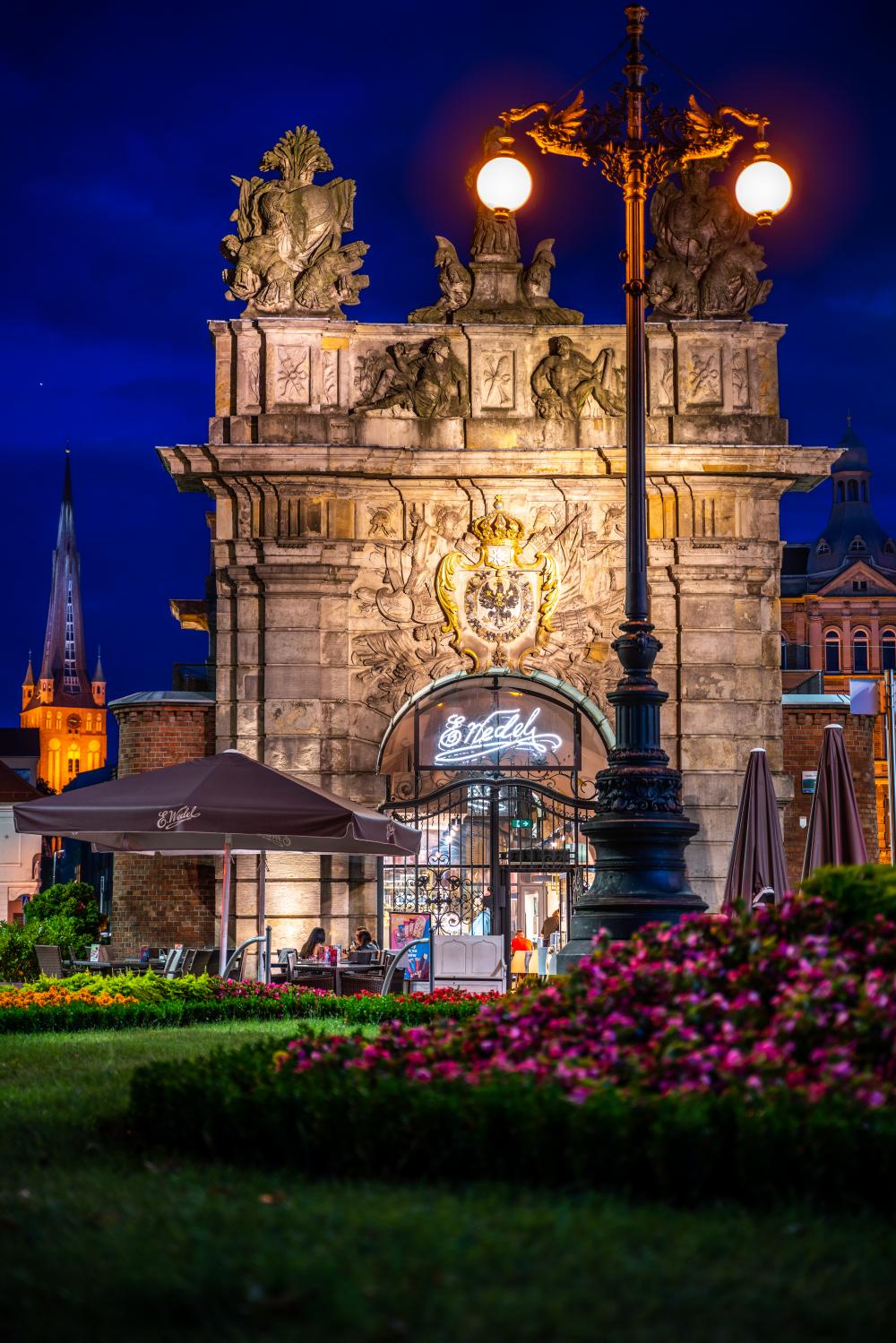Royal Gate

Apart from the Port Gate, it is the most impressive baroque fortress gate in West Pomerania and at the same time one of the most interesting buildings of this type in Europe.
The baroque fortification was intended to defend access to the city from the north. It was shielded by the Mill Bastion and Kagen Bastion.
The southern facade overlooks Żołnierza Polskiego Square - the former White Parade Square, created in the 1920s in the place of medieval defensive walls and a moat. On the eastern part there is Solidarity Square with the underground the Centre for Dialogue “Przełomy” which is a branch of the National Museum in Szczecin.
The gate was initially called the “Anklam gate”, but after Prussian king Frederick William IV’s visit to the city in 1841, its name was changed to the Royal Gate (Königs Tor). The gate was built in 1725-1727 according to the design of the architect and military engineer of Dutch origin, Gerhard Cornelius von Wallrave. Stone works were supervised by master Trippel, and masonry works – by a masonry master Hans Jürgen Reinecke from Magdeburg. Decorations were sculpted by Barholomè Damart: mythological figures of Mars and Hercules, tied-up prisoners, panoplies, emblems, trophies, a Prussian eagle, a golden royal crown and others. The west wall of the gate features a bronze plaque unveiled in 1999 dedicated to the Polish general Dezydery Chłapowski. General Chłapowski, owner of an estate in Turwia in Greater Poland, as a subject of the Prussian king, was sentenced by a court decision in Wschowa to two years improsonment for illegal participation in the November Uprising in 1831. He served a few months in Fort Prussia in Szczecin in 1833.
Above the arch of the passage there is a cartouche surrounded by the chain of the Order of the Black Eagle and topped with a royal crown. The attic above the entablature ledge features Mars (with a sword and a shield) and Hercules (with a club and a lion skin). The top of the attic shows a torso in Roman armour on a pedestal between two sitting figures of prisoners in armour and helmets, and on the sides there are two trophies. The interior of the gate has a barrel vault.
In 1873, a decision was made to abolish the fortifications. Thanks to the efforts of monument conservators, it was possible to avoid demolition of both the Royal Gate and the Port Gate. In 1875, both Baroque buildings were handed over to the city.
In 1942, due to a threat of bombing, both gate tops were dismantled and hidden in Las Arkoński. In 1957, the elements returned to their place.
The Royal Gate and the Port Gate are the two buildings remaining of the 18th century fortifications of Szczecin.
Currently, there is a chocolate café in the Gate.
